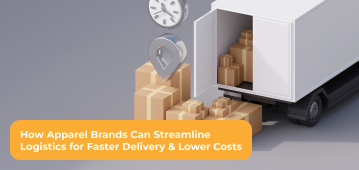How dropshipping is evolving over the past few years
Dropshipping has been a hot topic for the last few years. In the world of eCommerce, both sellers and manufacturers are reaping the rewards from this arrangement. When it comes to numbers, the dropshipping market could cross US$ 550 billion by 2025!
Now you’re probably wondering, why is dropshipping such a big market?
What’s the story behind Dropshipping?
We can best explain dropshipping through a comparative view.
Customer places order ? Retailer places order with Wholesaler/Manufacturer ? Wholesaler/Manufacturer deliver to Retailer ? Retailer stores extra products in inventory ? Retailer delivers to customer
As seen in the flow chart above, standard shipping starts with the customer placing an order with the retailer. The retailer then places an order with the wholesaler or manufacturer. The wholesaler or manufacturer delivers the order to the retailer when the order is ready. The retailer stores any extra products in their inventory and sends across the customer’s order.
Customer places order ? Seller places order with Wholesaler/Manufacturer ? Wholesaler/Manufacturer consolidates orders ? delivers directly to Customer
In dropshipping, the customer places an order with the seller, who forwards this order to the wholesaler or manufacturer. The wholesaler or manufacturer consolidates orders and delivers them directly to the customer.
Wow!
That’s cutting out one full stage of the process and saving up on days of delivery time. And it’s why dropshipping is popular. So then, how did dropshipping evolve into a mega-billion market in just a few years?
Dropshipping has been around for decades
You read that right. Particularly, it has been around since the 1960s.
The1960s
Dropshipping started on a small scale with mail-order catalogues. Large retail brands like JCPenney and Sears used this during the 1960s. They even established fulfilment warehouses and used mail-order companies such as CompuCard to speed up the delivery process.
The1990s
Brands started moving online, creating eCommerce stores. However, the internet wasn’t as transparent, and people easily fell victim to dropshipping scams. These unsustainable dropshippers lost credibility and went bankrupt by the end of the millennium.
The2000s
Amazon and eBay survived the dot-com bubble and went on to transform eCommerce. They simplified the selling process so that users could set up a store within hours or even minutes. Amazon and eBay also started advertising for sellers on their behalf, bringing down dropshipping costs.
2010s-2020s: Dropshipping transformed eCommerce
In the last decade, eCommerce expanded radically. The global retail eCommerce market is poised to hit US$5.5 trillion in 2022 and could grow even further, providing ample profitable opportunities for dropshipping.
Customers have also started shopping on mobile and social media often during the pandemic. Moreover, the rise of enablers such as Aliexpress, Shopify and Oberlo gives additional momentum to online commerce.
The above factors have helped dropshipping evolve into a multi-billion dollar industry today. As part of the freight forwarding industry, we have firsthand seen what’s new in dropshipping in the last few years. Here are some key trends:
Low barriers to entry
Anyone can set up a dropshipping business today. The internet facilitates the ease of transacting, so sellers don’t even need a separate office to operate. They just need minimal investments in a domain name, website or online store, hosting and payment processing.
High competition
Low barriers to entry have encouraged more and more dropshippers to set up shop. This means the space is highly competitive for new and old dropshipping sellers alike. It’s all about spotting the right opportunities at the right time and capitalising on them.
Retail arbitrage
Sellers can check the differences in prices online. They can purchase products for a lower price and sell them for a higher price on another platform. For instance, you see a book on eBay selling at $10, but the same one on Amazon retails for $20. You purchase it from eBay and sell it on Amazon, earning a 100% profit.
Easy access to suppliers
Using the internet, dropshippers can easily reach out to several eCommerce participants in a matter of minutes. They can constantly grow their network of sellers and retailers, getting better deals over time.
Automation
AI has become so prominent in the last few years that finding suitable software to aid your dropshipping efforts is simple. Digitisation and automation pull out dropshipping opportunities from various eCommerce sites. As a dropshipper, it gives you a continuous flow of business.
Scaling up
Automation has streamlined processes making scaling up easy. Dropshippers today operate beyond local and national boundaries, conducting business worldwide.
Improved cataloguing
In the 70s, cataloguing was about having decent enough pictures in mail-order booklets. Today, it has evolved into highly attractive visuals like editorial-style photos, GIFs, videos, animation, and more — all of this to entice customers to visit the seller’s store and buy from them.
Beyond the 2020s: What’s next for Dropshipping?
Manufacturers are now looking at dropshippers as supply chain partners. They want collaboration over transactional relationships, which will help streamline logistics activities. With regards to technology, AI will continue to develop and play a key role in automating dropshipping beyond software. There are also a few applications with in-built blockchain capabilities in the early stages of development.
While dropshipping has highly evolved in the last decade, the next few decades promise innovations and more growth. It’s one industry to look out for!
Like





Comments